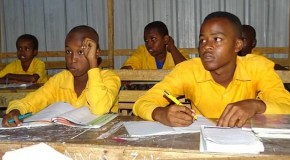Country Ethiopia, Somalia, Yemen Growing up in the Somali capital Mogadishu, she fell in love and bore a child out of wedlock four years ago. When her family threatened her life for destroying her ‘honour’, Aisha escaped.
She braved the hazardous journey with smugglers across the Indian Ocean to Yemen, and to what she thought was a better life.
Instead, Aisha now squats with four other women in the sprawling, cinderblock slum of Basateen, in the eastern seaport city of Aden.
They beg for money in the shabby southern seaport every day, often prostituting themselves for two dollars a trick. They split their meager earnings with their controlling pimp.
“I just want to go to a safer place for my children,” Aisha sighs. “In another country.”
Human trafficking networks with international reach are expanding in Yemen, and with poverty being a key factor, sexually exploited women are the most vulnerable victims.
Bleak as Aisha’s future may look, her fate is better than that of a 17-year-old Ethiopian girl who died alone in a hospital in Haradh, near the Saudi Arabian border.
Bought and sold within the trafficking network operating across Yemen, she was repeatedly raped and beaten until she died. She is now buried far from home and the trafficker who murdered her remains free.
“Between 2011 and 2012 there has been a significant increase in smuggling and trafficking, and of reported cases of violence and abuse perpetrated against new arrivals,” says Edward Leposky, an officer with the United Nations Refugee Agency (UNHCR).
In 2011 UNHCR recorded over 103,000 new arrivals in Yemen. This is the largest influx they have seen since they started documenting statistics six years ago, and Leposky suspects an increase for 2012. The real numbers are thought to be much higher.
Female migrants, mostly Ethiopian and Somali, often flee poverty and violence at home. They fork out hundreds of dollars to reach transit points in Djibouti or Puntland, and also for the dangerous, overcrowded boat rides – which can last one to three days – to Yemen.
Their goal is to reach Gulf states like Saudi Arabia for work. But along the way migrants are frequently gang raped, suffocated from overcrowding or thrown overboard by smugglers, as well as taken hostage by traffickers once they reach Yemeni soil.
“The most trafficking we see happening here is of those coming from the Horn of Africa to Saudi Arabia,” says Eman Mashour, part of the counter-trafficking team with the International Organisation of Migration (IOM) in Yemen.
“There is a network,” she says. “Females can be badly exploited by the traffickers. Women told us they were providing sex to smugglers along the way.”
Confirmation lies in the grim findings of October’s groundbreaking study, ‘Desperate Choices’, conducted by the Danish Refugee Council (DRC) and the Regional Mixed Migration Secretariat (RMMS). “Criminal networks extend through Ethiopia, Yemen, Djibouti, and Saudi Arabia,” the report says. “It seems highly likely that these gangs would have contacts in other countries.”
news



















Comments are closed.